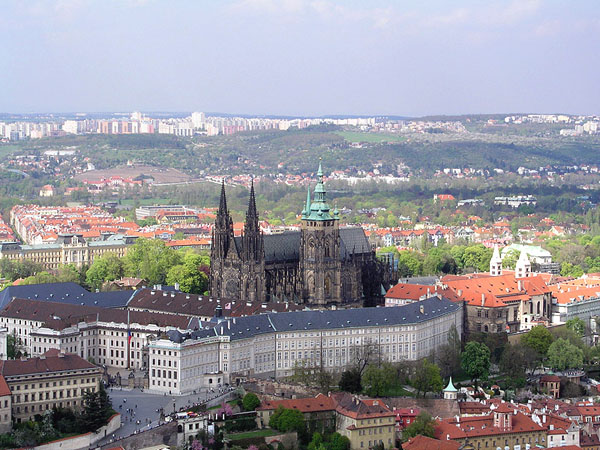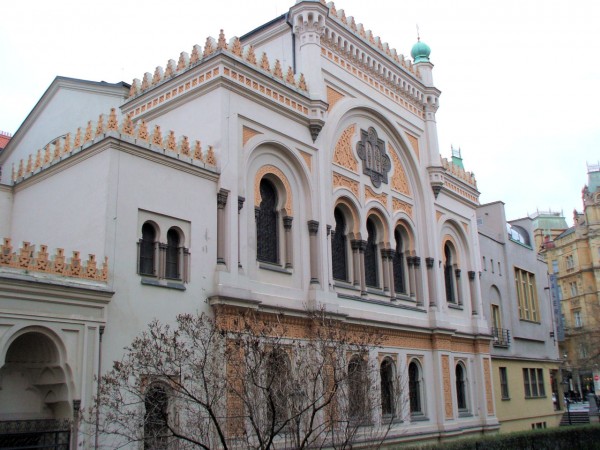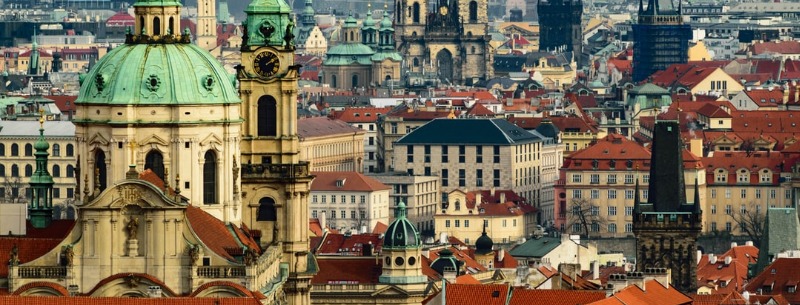Prague really has something for everyone. It’s beauty rivals even Paris, its history spans a millennium and its home to some of the best beer in Europe. It is one of the continent’s premier destinations, combining glorious architecture, lively beer gardens, medieval lanes, riverside parks, interesting museums, thrilling history and a cosmopolitan vibe that sweeps you off your feet. No matter how long you stay, you will always wish it was longer.
Prague (Praha) is one of the least “eastern” European cities you could imagine. Architecturally it is a revelation: few other cities anywhere in Europe look so good – and no other European capital can present six hundred years of architecture so completely untouched by natural disaster or war. Hardly surprising, then, that ninety percent of Western visitors spend all their time in and around the capital and that Praguers exude an air of confidence about their city. Prague rose to prominence in the ninth century under Prince Borivoj, its first Christian ruler and founder of the Premyslid dynasty. His grandson, Prince Václav, became the Good “King” Wenceslas of the Christmas carol and the country’s patron saint.
The city prospered from its position on the central European trade routes, but it was after the dynasty died out in 1306 that Prague enjoyed its golden age. In just thirty years Charles IV of Luxembourg transformed it into one of the most important cities in fourteenth-century Europe, founding an entirely new town, Nové Mesto, to accommodate the influx of students. Following the execution of the reformist preacher Jan Hus in 1415, the country became engulfed in religious wars, and trouble broke out again between the Protestant nobles and the Catholic Habsburgs in 1618. The full force of the Counter-Reformation was brought to bear on the city’s people, though the spurt of Baroque rebuilding that went with it gave Prague its most striking architectural aspect.
After two centuries as little more than a provincial town in the Habsburg Empire, Prague was dragged out of the doldrums by the Industrial Revolution and the národní obrození, the Czech national revival that led to the foundation of the First Republic in 1918. After World War II, which it survived substantially unscathed, Prague disappeared completely behind the Iron Curtain. The city briefly re-emerged onto the world stage during the cultural blossoming of the Prague Spring in 1968, but the decisive break came in November 1989, when a peaceful student demonstration, brutally broken up by the police, triggered off the Velvet Revolution which eventually toppled the Communist government. The popular unity of that period is now history, but there is still a great sense of new-found potential in the capital, which has been transformed by restorations over the last decade.
Start your visit at the National Museum to get a dazzling introduction to Czech history. Built in the 1880s, the museum looms above Wenceslas square and is an architectural icon of the Czech National Revival. While the main displays of fossils, rocks and stuffed wildlife feel a bit old fashioned, the smaller galleries are an extravaganza of treasures. Bronze busts and statues pay tribute to Czech artists and heroes, medallions and jewels tell the stories of emperors and kings, and the bullet hole still riddling the facade are a reminder of the 1968 Warsaw Pact troops.
Just a short walk away is the Jewish Cemetery, which opened in 1890 and now holds the remains of writer Franz Kafka. Each year, fans flock to the site on June 3rd, the anniversary of Kafka’s death.
Spend the afternoon strolling along the Charles Bridge, a favorite activity of both locals and tourists in Prague. Commissioned by Charles IV in 1357, the bridge is loaded with visitors from morning until night. When you reach the end of the bridge at Stare Mesto, look down at the right side retaining wall to spy the Bearded Man. The carved stone head was used as a marker for the water levels during medieval times.
The nearby Wallenstein Palace houses the Senate of the Czech Republic but is open to visitors on the weekends. Built in 1630, the palace contains detailed ceiling frescoes that tell the story of Albrecht Wallenstein, who lead the Habsburg armies. The huge walled garden behind the palace is a peaceful oasis among the bustling streets, and changing exhibitions of modern art decorate the garden’s east end.
The most popular attraction in Prague is its castle, and for good reason. It is the world’s largest ancient castle, covering an area larger than seven football fields. Since its creation in the 9th century, the castle has been a fortified settlement and the seat of many Czech rulers. Today, visitors can explore two courtyards, the old royal palace section and an exhibition detailing the castle’s fascinating history.
Prague Castle – Czech Republic
Prague Castle is the most popular sight visited in Prague. It is the largest ancient castle in the world (570 m long, on average 128 m wide, area 7.28 hectares). Constructed in the 9th century by Prince Boøivoj, the castle transformed itself from a wooden fortress surrounded by earthen bulwarks to the imposing form it has today. Rulers made their own additions so there is a mixture of styles. Prague castle has had four major reconstructions, but it keeps its classical facelift it took on in the 18 century during the reign of Maria Theresa. The castle has three courtyards and it has always been the seat of Czech rulers as well as the official residence. Allow at least half a day (it does not include time for museum visits) if you want to examine it in depth.

The Prague Castle was most likely founded in around 880 by Prince Bořivoj of the Premyslid Dynasty (Přemyslovci). According to the Guinness Book of World Records, the Prague Castle is the largest coherent castle complex in the world, with an area of almost 70,000 m². A UNESCO World Heritage site, it consists of a large-scale composition of palaces and ecclesiastical buildings of various architectural styles, from Roman-style buildings from the 10th century through Gothic modifications in the 14th century. The famous Slovenian architect Josip Plečnik was responsible for extensive renovations in the time of the First Republic (1918-1938). Since the Velvet Revolution, Prague Castle has undergone significant and ongoing repairs and reconstructions.
History of Prague Castle – On the basis of archaeological research and the oldest written sources, it is thought that Prague Castle was founded around the year 880 by Prince Borivoj of the house of Premyslides. The early medieval castle site was fortified with a moat and a rampart of clay and stones. The first walled building was the Church of the Virgin Mary. Other churches, dedicated to St. George and St. Vitus, were founded in the first half of the 10th century.
Best of Prague
Travelers from around the world will appreciate the John Lennon Wall, where a picture of the Beatle was painted after his murder in 1980. Lennon was a hero of pacifism to many young Czechs, and no matter how many times the secret police tried to wash away the artwork, portraits of Lennon kept popping up. The wall became a political focus for young Prague citizens and today is covered with peace messages and other graffiti.
Astronomical Clock
Every hour on the hour, the Astronomical Clock of the Old Town Hall on Staromestské námestí comes to life with a show of mechanical figures. It may be a cliché but every tourist should make sure they see it.
Staré Mesto
Wander the winding, cobbled streets of Staré Mesto, the “old town”. Even though most of the city’s markets, shops, restaurants and pubs are located here, the original medieval layout is still clearly visible.
The Charles Bridge
The medieval Charles Bridge is one of the city’s most famous monuments, but it’s at its best after dark when the crowds have thinned and the statues are floodlit.
Petrín Hill
Take the funicular railway up Petrín hill and visit the remnants of the 1891 Prague Exhibition: the Bludiste (mirror maze), and the miniature version of the Eiffel Tower.
Tram #22
Take a ride on tram #22 for a free sightseeing tour of downtown Prague. From Vinohrady in the west, it will take you across the river, round several hairpin bends, finishing up outside Prague Castle.
Josefov
The old Jewish quarter of Josefov contains the oldest still-functioning synagogue in Europe, as well as the melancholic Old Jewish Cemetery.
Obecní Dum
At the turn of the century, Prague boasted a café culture to rival that of Vienna. One of the few places to survive intact is the café in the Obecní dum, a fine Art Nouveau building conceived as a cultural center and decorated inside and out by Czech artists.
The Globe
Pay a visit to The Globe to check out the bookshop’s unrivaled selection of English-language books, and then retire to the adjacent café to browse through your purchases.
Changing of the Guard
The changing of the guard, which takes place at Prague Castle at noon every day, is an understated affair, featuring a lilting, slightly sad little brass fanfare composed by a rock musician friend of President Havel.
Nightlife in Prague
In the past, most bars shut down by 10 pm and the city’s nightlife was nearly non-existent, but today, visitors and locals have more than enough entertainment options to choose from. Traditional Czech pubs survive next to Western-style cocktail bars, and Czech beer is on tap practically everywhere. During the summer, locals love to unwind in the parks’ beer gardens, and many bars offer incredible rooftop views of the city. Beyond the bars, visitors can cruise down the Vltava on evening tours, gamble at high-class casinos, dance to international DJs or take in some of the continent’s finest theater and musical performances.
As far as live music is concerned, the classical scene still has the edge in Prague, though more new jazz clubs have livened up the scene. Some better discos and nightclubs have sprouted up around Wenceslas Square – although others still act as mini red-light districts. Predictably enough, with a playwright as president, theatre in Prague is thriving; without knowing the language, however, your scope is limited, though there’s a tradition of innovative mime, puppetry and “black light” theatre in the city. Tickets are cheap and available from any Ticketrro outlet (there’s one in each PIS office) as well as from the venues themselves. As for particular areas, in the summer Hradcany hosts many open-air concerts and plays.
Travel Information
Prague’s airport, Ruzyne, is 10km northwest of the city. The cheapest way of getting into town is by bus #119 (every 10-15min), a 30 min ride to the Dejvická metro station at the end of metro line A. Alternatively, there’s the express minibus (every 30min), which stops first at Dejvická metro station, and ends up at námestí Republiky (90kc) or 100 meters down the road at V Celnici (in front of the Hotel Marriot). The express minibusses will also take you straight to your hotel if you wish for around 350kc per drop-off – a bargain if there’s a few of you. Avoid the so-called “fixed price” taxis. Arriving by train from the west, you’re most likely to end up at Praha hlavní nádrazí, on the edge of Nové Mesto and Vinohrady. It’s only a short walk to Wenceslas Square from here (though inadvisable at night), and there’s also a metro station inside the station. International expresses, passing through Prague, often stop only at Praha-Holesovice, north of the city center at the end of metro line C. Some trains from Moravia and Slovakia wind up at the central Masarykovo nádrazí, on Hybernská street near námestí Republiky; and provincial trains from the south usually get no further than Praha-Smíchov, connected to the center by metro line B. There are lockers and left-luggage offices (open 24hr) at all these stations. The main bus station is Praha-Florenc, on the eastern edge of Nové Mesto, on metro line B.

The best place to go for information is the Prague Information Service , or PIS (Prazská informacni sluzba), whose main branch is at Na príkope 20. The staff speak English and will be able to answer most inquiries, arrange private accommodation, sell maps and guides and act as a ticket agency. As for listings, it’s worth getting hold of the free English-language monthly Culture in Prague , the fortnightly Do mesta/ Downtown ( www.downtown.cz ) or the monthly freebie Think magazine for trendy clubs and hang-outs. The English-language newspaper Prague Post ( www.praguepost.cz ), which comes out every Wednesday, also has a good selective listings section. There are additional PIS offices in the main train station, underneath the astronomical clock at Staromestské námesti 1 and in the tower (Mostecká vez) at the west end of the Charles Bridge (the latter is only open April to October).

Getting Around Prague
Prague is reasonably small, but to cross the city quickly, or reach some of the more widely dispersed attractions, you’ll need to use the public transport system. There are two main types of ticket : the 12kc prestupní jízdenka , which is valid for an hour (ninety minutes off-peak), during which time you may change metro lines, trams, and buses as often as you like, and the 8kc neprestupní jízdenka , which allows you to travel for up to fifteen minutes on a single tram or bus, or up to four stops on the metro (not including the one you start at). Tickets must be bought in advance from a tobacconist, kiosk or from one of the extraordinarily complicated ticket machines inside all metro stations and at some tram stops; basically, you want to hit the “8” or “12” button, followed by the vydej/enter button. You must validate your ticket on board or at the metro entrance.
Alternatively, if you’re going to be using the public transport system a lot, it’s worth getting hold of a travel pass ( denní jízdenka ), available for 24 hours (70kc), three days (200kc), seven days (250kc) or fifteen days (280kc); write your name and date of birth on the reverse of the ticket, and validate it when you first use it. Plain-clothes inspectors, who will show you a red and yellow star-shaped badge plus ID, check tickets – it’s a fine of 400kc on the spot if it’s not valid. The fast Soviet-built metro is the most useful form of city transport. The trams navigate Prague’s hills and cobbles with remarkable dexterity and run every ten or twenty minutes throughout the day. Tram #22, which runs from Vinohrady to Hradcany, is a good way to sightsee. Night trams #51-58 run every forty minutes between midnight and 4.30 am, and all pass by Lazarská in Nové Mesto. The horror stories about Prague taxi drivers ripping off tourists are too numerous to mention, so your best bet is to flag a taxi down or call the English-speaking AAA (tel 02/14014), rather than go to the mafia-controlled ranks on Václavské námestí, Národní and outside Obecní dum.
Prague Geographical Location
Prague is northwest of Czech Republic’s center on the Vltava River. It is the country’s largest city with a population of approximately 2,300,000 throughout its metropolitan area.
Prague Language
Czech is the official language of the Czech Republic and is the most widely spoken. Slovak is also spoken but in small numbers.
Prague Predominant Religion
- 27% Roman Catholic
- 2% Protestant
- 12% Unspecified
- 59% Unaffiliated
The people of the Czech Republic are known to be unreligious as evident by their religious demographics although when surveyed many do believe that there is a higher power.
Prague Currency
The Czech Koruna is the official currency of the Czech Republic.
Prague Climate
Prague has an oceanic climate with cool temperatures and snow during the winter. The summer months can be quite rainy with occasional storms.
Prague Main Attractions
- Lobkowicz Palace
- St. Vitus Cathedral
- Old Town Square
Other Attraction in Prague
- Charles Bridge
- Old Town Hall and Astronomical Clock
- Petrin Tower
- Prague Castle
